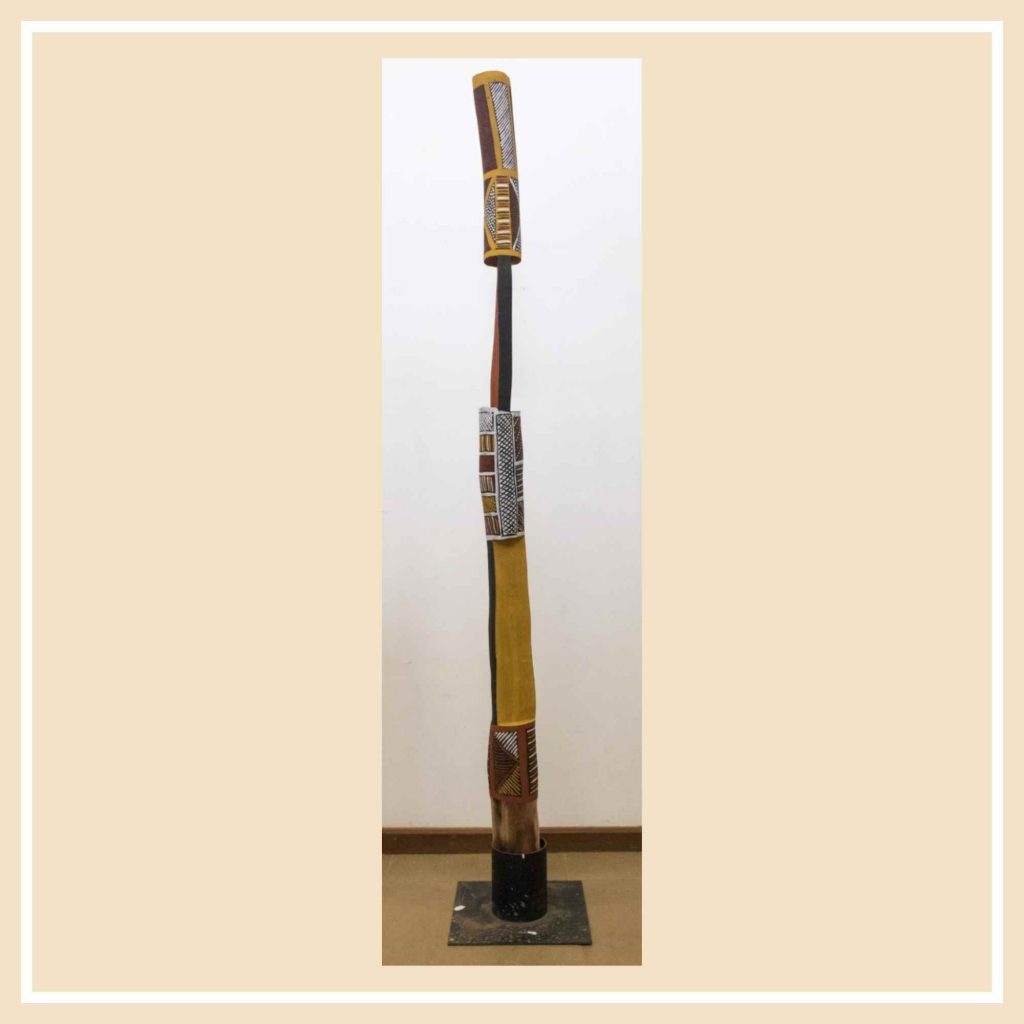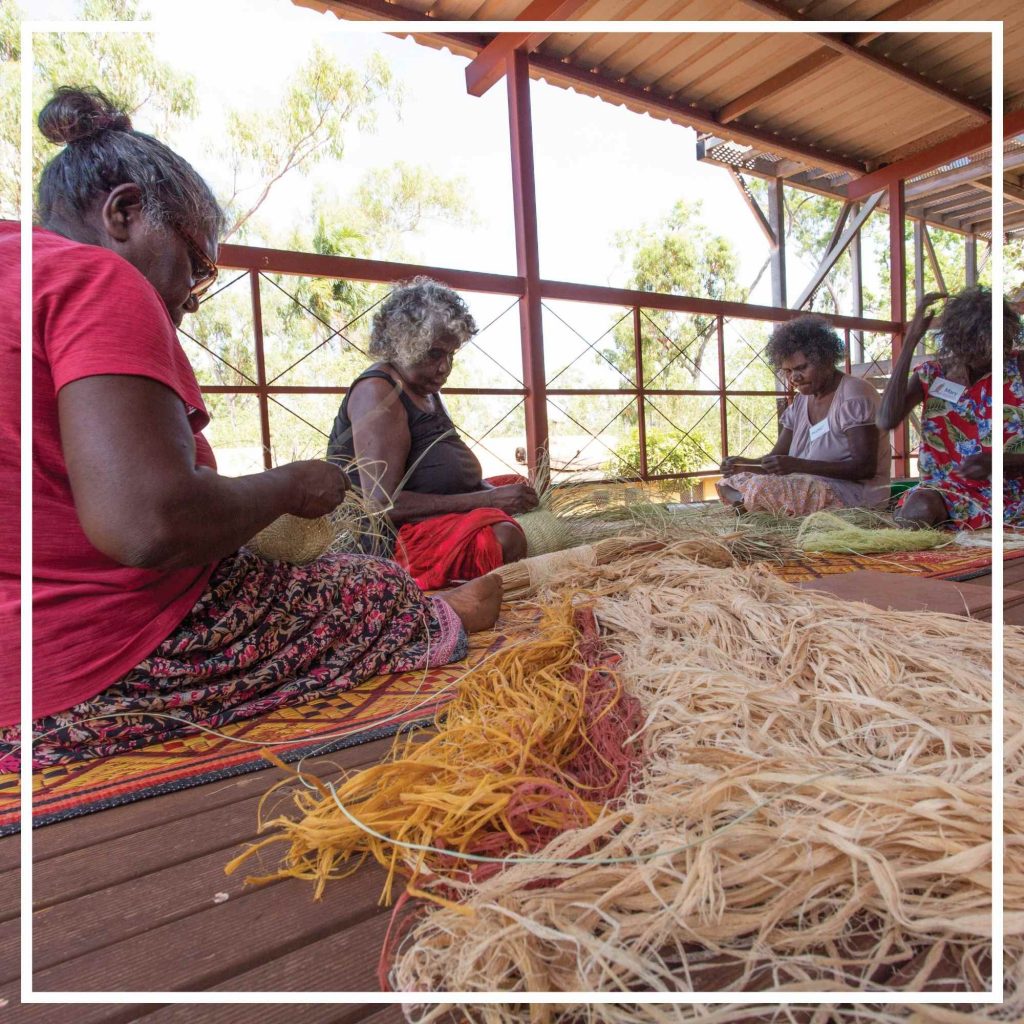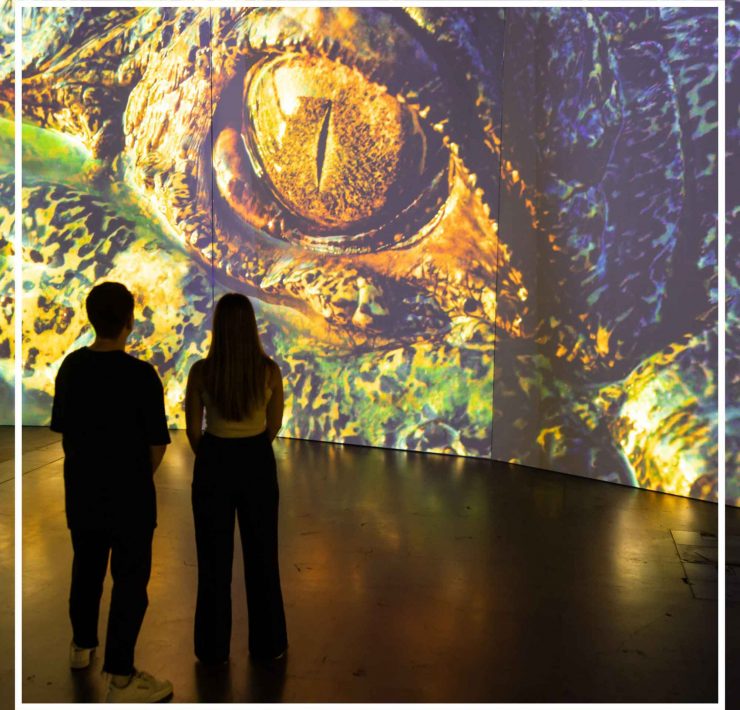The 6 Must-See Aboriginal Art Galleries In The Top End Of The Northern Territory

Kearyn is a Nyoongar Yamitji Journalist who enjoys telling stories.
From the Tiwi Islands to Uluru, the Northern Territory has some of the best selections of art in Australia and possibly the world.
The connection to country and culture is still strong in the top end of Australia. This list will be a must-see gallery guide for those who love traditional and contemporary Aboriginal Australian Artworks.
Buku-Larrŋgay Mulka Art Centre Art Centre

The Yolŋu-owned and operated Buku-Larrŋgay Mulka Art Centre in Yirrkala is world-renowned and has established itself as one of Australia’s premier Aboriginal art centres.
Yirrkala is 18 kilometres south of Nhulunbuy in East-Arnhem land. The quickest flight from Darwin Airport to Gove Airport takes 1h 15 minutes but the cheapest option would be to drive nearly 14 hours.
The Art Centre has been at its original location since 1975 supporting the people of Yirrkala and more than 20 homelands in the region. The Art Centre is well known for their bark paintings and memorial poles, woodcarvings and Yidaki (Didgeridoo). The East-Arnhem land region is in fact the traditional home of the Yidaki (Didgeridoo), and some of the world’s finest Didgeridoos are still made at the Buku-Larrŋgay Mulka Art Centre.
Next door you can find the award-winning museum displaying the two four metre tall Yirrkala Church Panels, a collection of Yolngu bark paintings, carvings, artefacts as well as historical photographs and films. It also has a collection of works specifically created for the gallery from the mid-1970s and early 1980s by traditional owners which provides an outline of the kinship structure of the Yolŋu world.
Jilamara Arts Centre

80 kilometres north of Darwin but still in the Northern Territory you will find the Tiwi Islands. They comprise two main islands – Bathurst and Melville. You can get there by flying or a ferry ride. The flying time to Bathurst Island is 20 minutes, and the ferry ride takes 2.5 hours.
On the northern coast of Melville island, at Milikapiti, you can find the remote Jilamara Arts Centre. The traditional owners of Melville island are Manupi peoples. Jilamara artists are nationally and internationally renowned for their unique Tiwi style. They produce contemporary works based on ceremonial body painting designs, clan totems, and Tiwi creation stories.
Jilamara produce authentic Tiwi art including ironwood carved birds and Tutini poles, ochre paintings on bark, canvas, linen and paper, original limited edition prints and hand screen printed textiles.
Maruku and Walkatjara Art Galleries


Uluru is one of the most sacred places for Indigenous people throughout Australia. It is home to the Pitjantjatjara and Yankunytjatjara people, known as Anangu in local language, and takes approximately 50 minutes flight time for direct flights from Alice Springs to Uluru or just under 5 hours to drive.
Maruku and Walkatjara Art galleries exhibit the work of local artists as well as the artists from nearby communities of the Central Desert region.
Both are open at the Uluru-Kata Tjuta National Park Cultural Centre Monday to Sunday.
For over 30 years Maruku has operated as a not-for-profit art and craft corporation and is owned and operated by Anangu. Approximately 900 Anangu artists belong to over 20 remote communities across the Central and Western Deserts.
Nyinkka Nyunyu Art and Culture Centre

The Traditional Owners of the Tennant Creek area are the Warumungu people, it takes over 500 kilometres or, five hours, to drive from Alice Springs.
“Nyinkka Nyunyu Art and Culture Centre” is one of the highlights in Tennant Creek. It opened in 2003 and there are over 130 Warumungu and Barkly Region artists who sell their artworks and artefacts through the centre.
The gallery is open Tuesday to Saturday and has a wide range of painting artworks and wood-carving artefacts for sale. The Punttu Family Exhibition is a permanent installation in the gallery but there are frequently changing exhibitions as well.
Mimi Aboriginal Arts and Craft Gallery

Katherine is the point where the traditional lands of the Jawoyn, Dagoman, and Wardaman Aboriginal peoples converge. It is over 300 kilometres away from Darwin or a three hour drive.
Established in 1978, “Mimi Aboriginal Arts and Craft” is one of the best galleries based in the township of Katherine and is a 100% Aboriginal community-owned not-for-profit art centre.
Mimi Aboriginal Arts and Craft specialise in Weaving, Wooden artefacts and paintings. Visitors can sometimes watch and engage with artists while they paint and create and is open in wet and dry season Monday to Friday.
The NT government has recently upgraded Mimi Arts and has now committed 5.5 million dollars to upgrade Godinymayin Yijard Rivers Arts and Culture’s facilities, to create a new 500-seat outdoor amphitheatre for cultural performances. It will be the third biggest amphitheatre in the southern hemisphere and is expected to be opened to start dry season next year.
The Museum and Art Gallery of the Northern Territory

If you don’t have much time to spend in the Northern Territory, the Museum and Art Gallery Northern Territory (MGNT) in Darwin is the perfect place to see different varieties of the best art from across the state.
On Larrakia land, the MGNT Darwin is home to the annual Telstra National Aboriginal and Torres Strait Islander Art Awards (NATSIAA) —the most significant celebration of its kind in Australia.
It is also home to internationally renowned artistic, cultural, and scientific collections and research programs.
What is the best way to these places?

The best way to get to most of the destinations on this list is to fly or by driving in a 4×4 wheel drive.
All of the destinations are reachable by flight unless you enjoy driving and seeing the countryside on unsealed dirt roads.
The Ghan Expedition is also an option, it is a famous luxury train ride that starts in Darwin and stops at Katherine, Tennant Creek, Alice Springs, Uluru (optional upgrade), Manguri, Coober Pedy and Adelaide.
What is the best time of year to go?
The best time of the year to explore these Art galleries would be during the dry season in April to October. This is because many of the tours and galleries shut for the wet season and are not operational.
Peak season for air travel to the Northern Territory is June – August; it’s advisable to book well ahead during these months.
High season: Dry season (April to October)
Low season: Wet season (November to March)
What permits do I need to visit these places?

Like other landowners in Australia, Aboriginal people have the legal right to grant or refuse permission to people wishing to enter or travel through their land. Permits are an important part of ensuring you have the right access approvals to our beautiful region and respecting our traditional owners.
A permit is a written permission from Traditional Owners to enter their private land. The permit system is designed to help protect the privacy of communities, preserve culture and safeguard the natural environment and promote visitor safety.
When visiting the Northern Territory by always checking ahead with the relevant land council whether there are permit requirements.
In most cases you won’t need a permit to go to the art galleries but you will need a permit to go around the community and other places and you can find them below:
Apply for online permits in the Top End from the Northern Land Council (not including the Tiwi Islands or Groote Eylandt).
The Tiwi Land Council manages visitor permits for the Tiwi Islands (Bathurst Island and Melville Island).
Contact the Anindilyakwa Land Council to apply for Groote Eylandt permits
Dhimurru access permits – Dhimurru is an incorporated Aboriginal organisation established by Yolngu land-owners in Northeast Arnhem Land. The office is located in Nhulunbuy (Gove). All visitors to the Recreational Areas must obtain a permit from Dhimurru before they go.
Apply for online permits with the Central Land Council for permission to enter Aboriginal lands in the Red Centre (south of Tennant Creek).
Kearyn is a Nyoongar Yamitji Journalist who enjoys telling stories.








